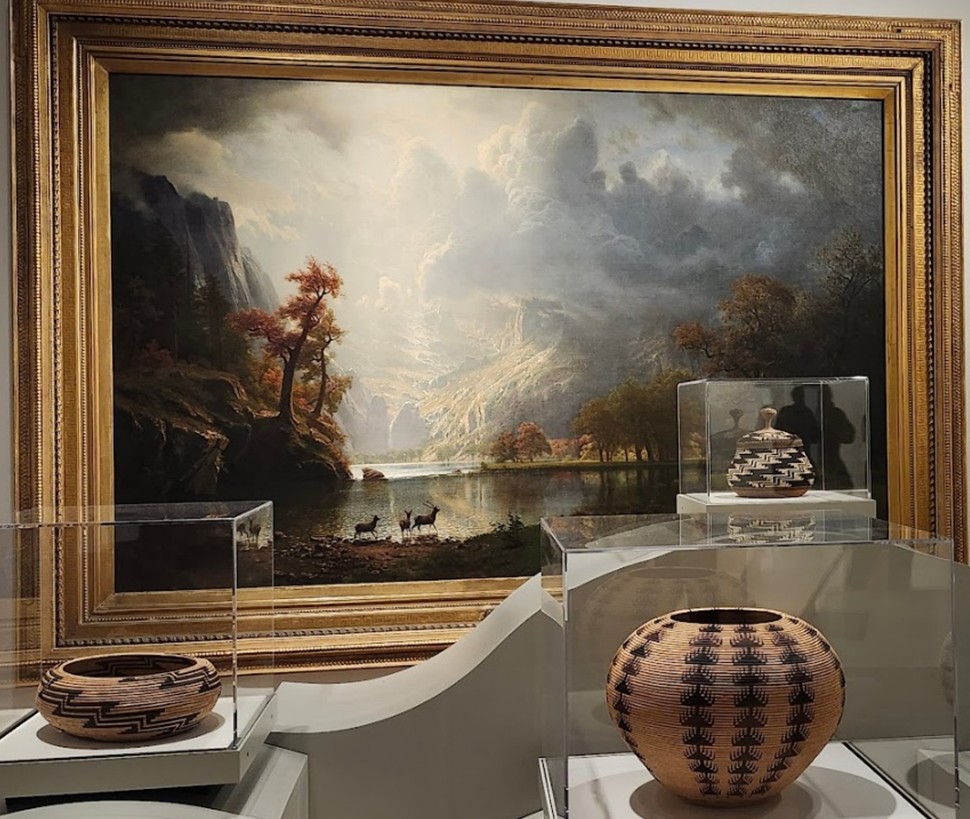Perception and Context
Ruth Ann Stites, Staff Writer
 One of the advantages of living in Northwest Arkansas is the expanding availability of cultural activities in our communities. I took this picture at a special exhibit called “Knowing the West” recently presented by Crystal Bridges Museum of American Art in Bentonville. This exhibition’s goal is to encourage viewers to broaden and diversify their perception of the American West.
One of the advantages of living in Northwest Arkansas is the expanding availability of cultural activities in our communities. I took this picture at a special exhibit called “Knowing the West” recently presented by Crystal Bridges Museum of American Art in Bentonville. This exhibition’s goal is to encourage viewers to broaden and diversify their perception of the American West.
The painting, Albert Bierstadt’s Sierra Nevada Morning (1870), focuses on a wild landscape unmarred by any human present. The artist was selective in what he painted. I understand that motivation well since I try to keep human intrusion to a minimum when shooting landscape photos in the tradition of great photographers like Ansil Adams or Arkansas’ own Tim Ernst. As artists, we edit our world.
The point of the instillation of Sierra Navada Morning, which includes several beautiful Native American baskets, was that this was not an empty landscape as many viewers in its 150 year existence assumed. Not only was there a vibrant Indigenous presence in the area, but California had been a state for 20 years in 1870 and was growing rapidly in population even in the beautiful mountains Bierstadt painted. The arrangement of painting and basketry was created to give us context.
As human beings, and especially as people seeking to be Cross Disciple Christians, we need to understand how we use…and abuse…perception and context to form our ideas about what is true, what is real, and what is eternal. I like this quote from Henry Drummond’s The Ideal Life published in 1913. The central idea of finding the unseen by looking at the seen is as important today as it was over a century ago.
Look through till the thing you look through becomes dim, then transparent, and then invisible, and the unseen beyond grows into form and strength. For, truly, the first thing seen is the shadow, the thing on the other side the reality. The thing you see is only a solid, and men mistake solidity for reality. But that alone is the reality—the eternal which lies behind. Look, then, not at the things which are seen, but look through them to the things that are unseen. (Pg. 63, accessed 1-31-25)
The Apostle Paul has much the same idea when he wrote to the Corinthians, “For now we see only a reflection as in a mirror; then we shall see face to face. Now I know in part; then I shall know fully, even as I am fully known” (1 Cor. 13:12). I think the Apostle as pointing to the eternal God behind and beyond the world we know. We need to adopt this frame of reference as we seek to deal with our perceptions (the way we edit our world) and the context (all the people and things influencing our issues and our understanding of them) if we are to fully see the face of God as pictured in Revelation 22:1-5, “They will see his face, and his name will be on their foreheads” (verse 4).
(Photo credit: RA Stites, Crystal Bridges Museum)
